How to Introduce Montessori Learning Without Overwhelm
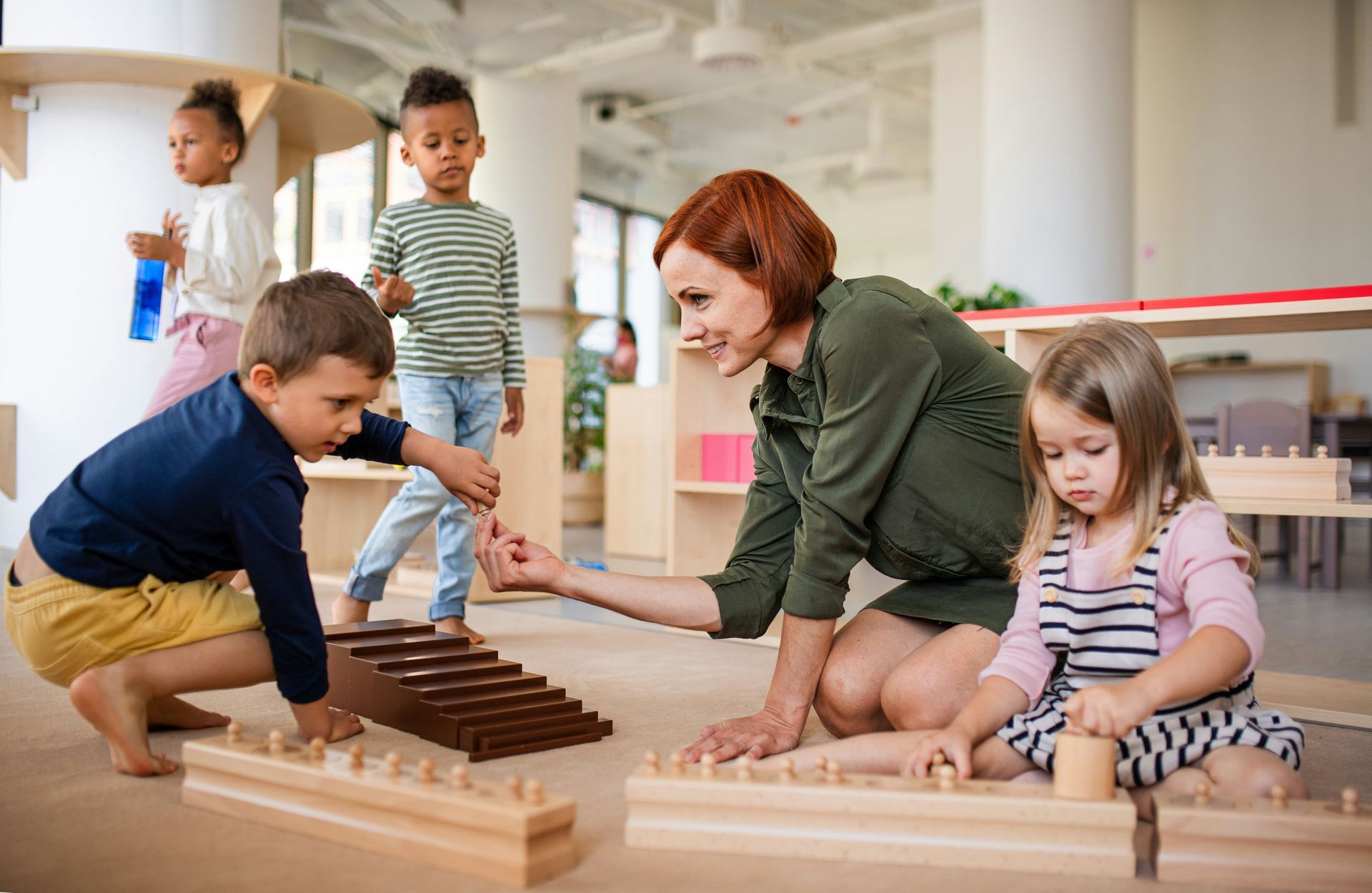
Montessori education has become a favorite among parents who want to nurture their child’s natural curiosity and independence. But if you’re new to Montessori, it can feel a bit overwhelming - do you need to buy all wooden toys? What about expensive setups? The good news is that Montessori doesn’t have to be complicated or costly. You can start small, and every little step counts.
Here’s a simple guide to introducing Montessori learning at home in a stress-free way.
1. Follow your Child's Interests
Montessori is all about child-led learning. Instead of structuring every moment, observe what excites your child. Do they love stacking objects? Exploring textures? Pouring and scooping? Use their interests as a starting point for engaging activities.
💡 Try this:
- If your child enjoys stacking, offer wooden blocks or nesting cups.
- If they love nature, go on a nature walk and collect leaves or rocks to explore.
- If they enjoy water play, provide a small pitcher and cup for them to practice pouring.

2. Create a Calm, Simple Play Space
Montessori environments are designed to be clutter-free and inviting. You don’t need a special playroom—just a small, organized space where your child can access a few carefully chosen toys or activities.
💡 Try this:
Use a low shelf to display 4-6 toys or activities at a time.
Rotate toys every few weeks to keep your child engaged.
Keep baskets or trays for easy cleanup and independence.
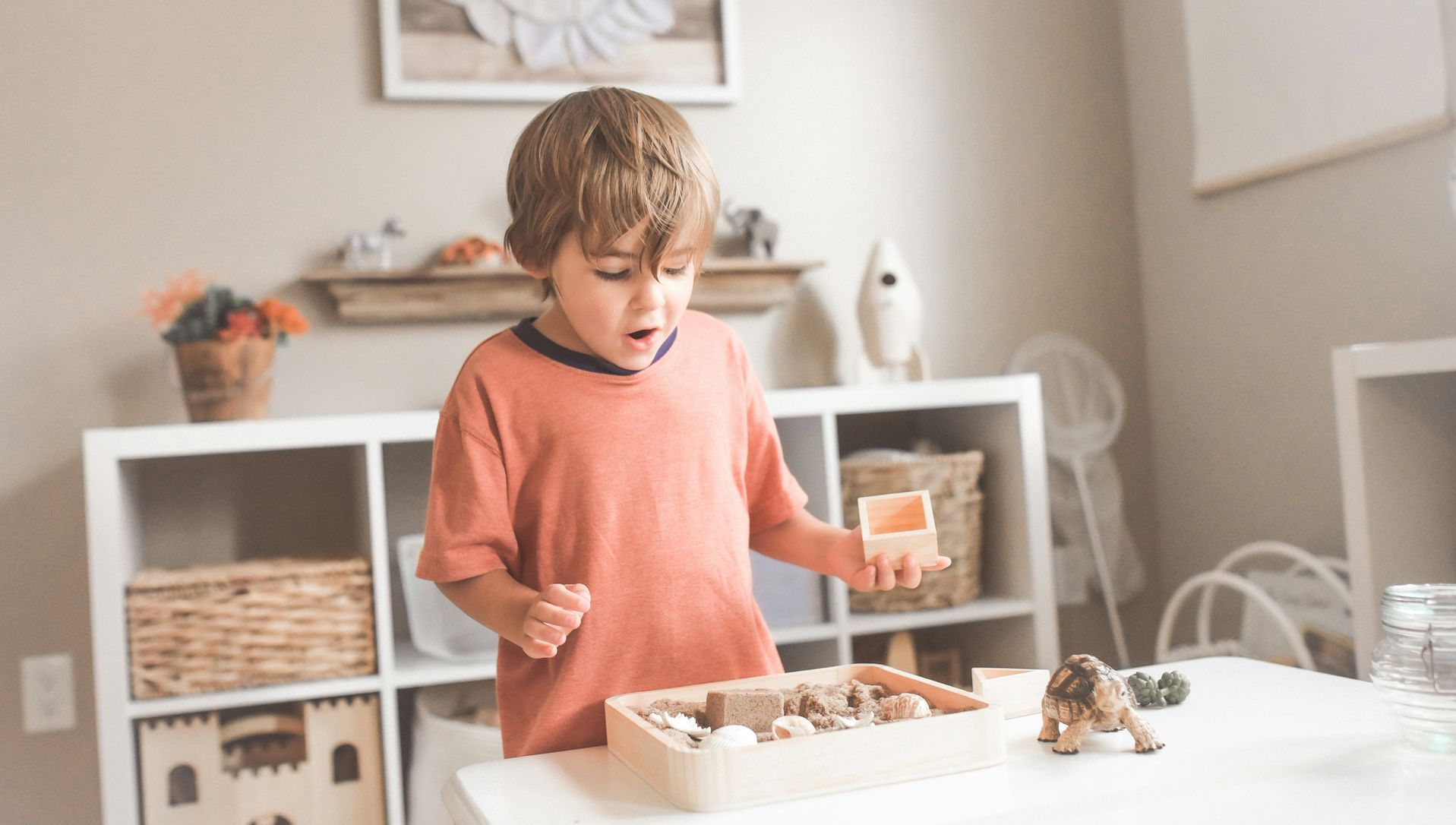
3. Encourage Independence with Everyday Tasks
Montessori isn’t just about toys. It’s about helping children gain independence. Let your child participate in daily routines like getting dressed, setting the table, or watering plants.
💡 Try this:
Provide a step stool so your child can wash their hands or help in the kitchen.
Offer child-sized tools like a small broom or a watering can.
Let them pick out their clothes and practice dressing themselves.
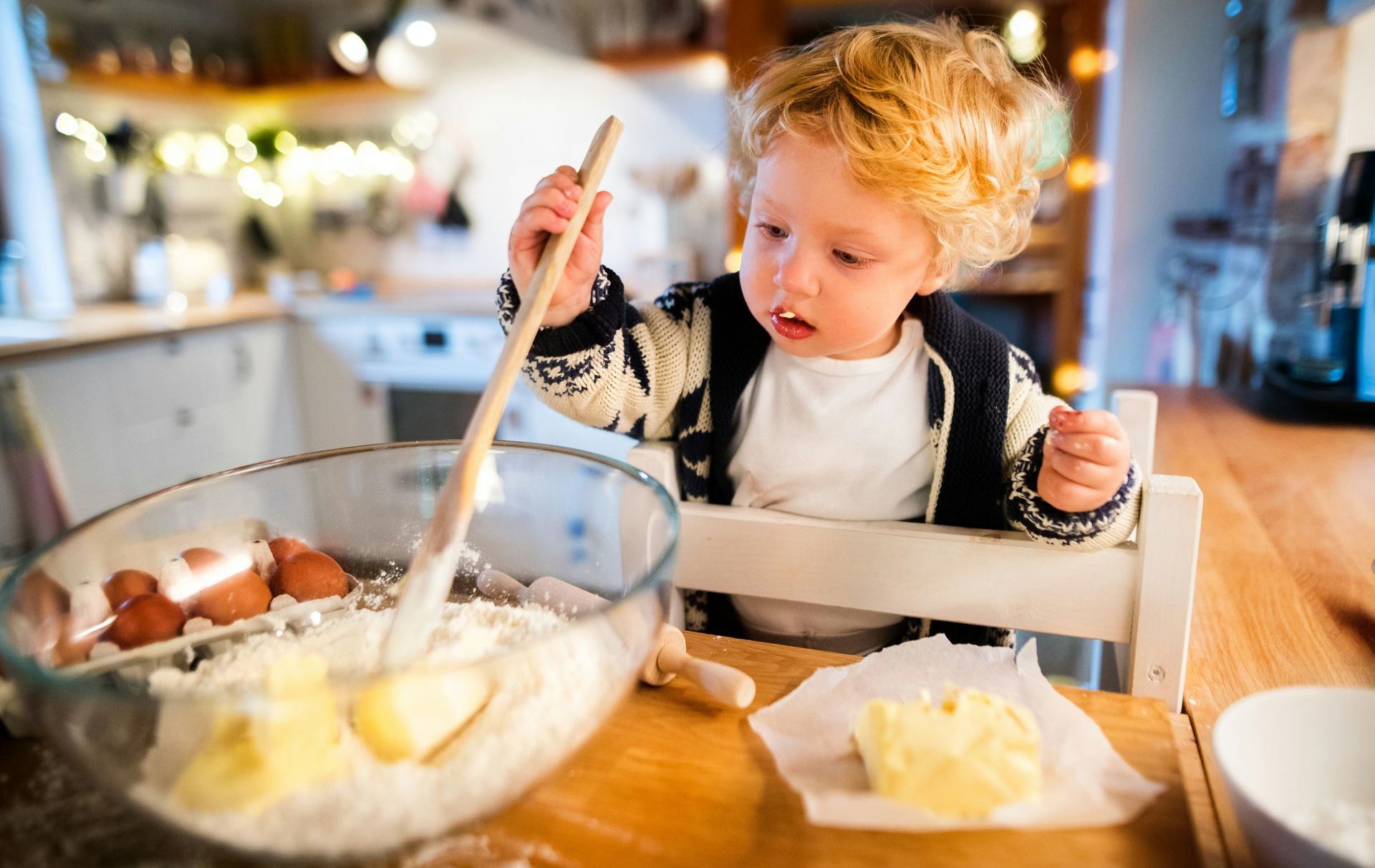
4. Choose Open-Ended, Hands-On Toys
Montessori toys are designed to encourage exploration, problem-solving, and fine motor skills. Opt for simple, open-ended toys that grow with your child.
💡 Try this:
Puzzles and shape sorters for problem-solving.
Stacking and nesting toys for coordination.
Sensory toys that engage touch, sight, and sound.
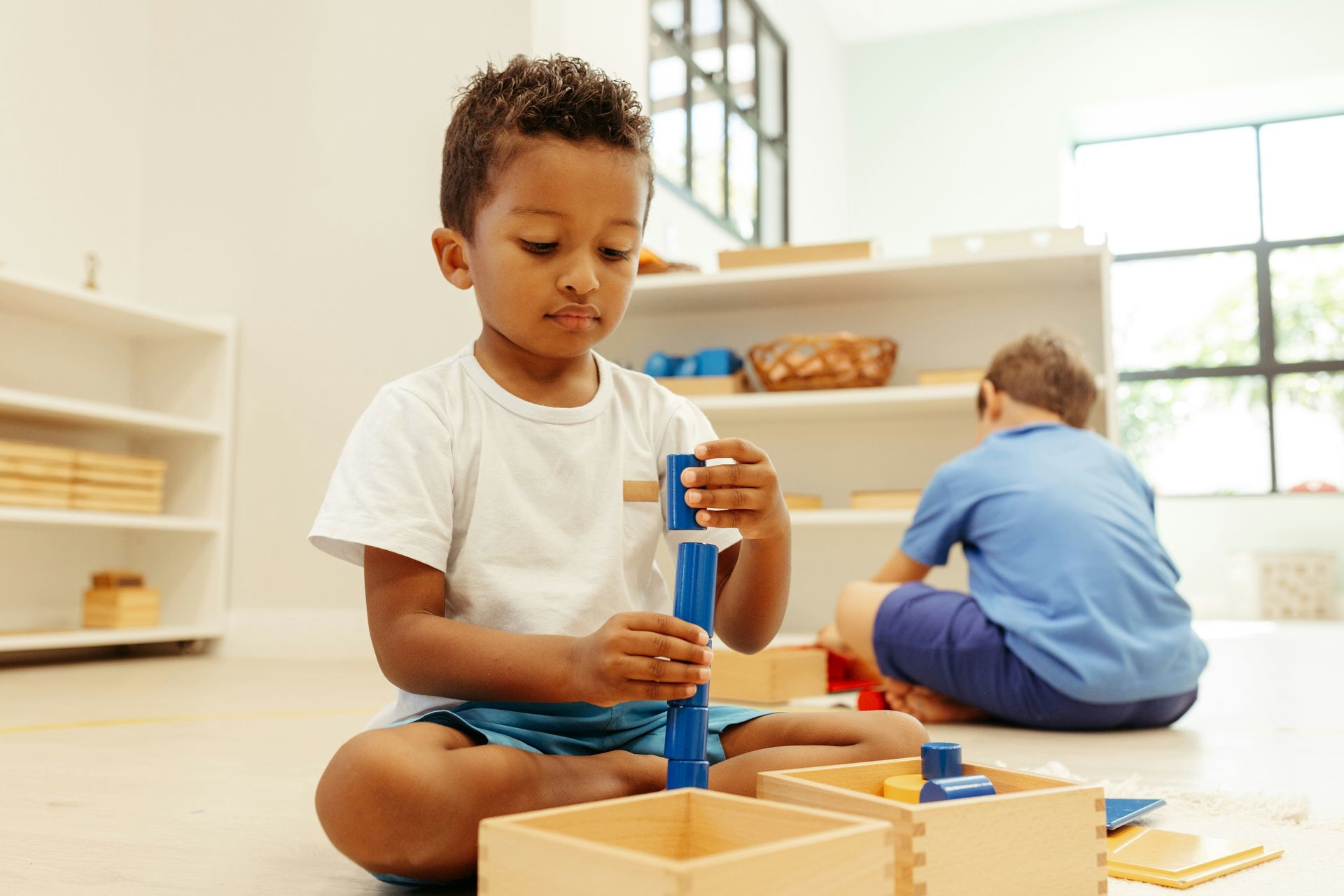
5. Slow Down & Enjoy the Process
Montessori learning isn’t about perfection—it’s about progress. Let your child explore at their own pace, make mistakes, and discover through experience.
💡 Try this:
Give your child extra time to complete a task without rushing.
Resist the urge to “fix” their mistakes right away - learning happens through trial and error.
Celebrate small wins, like buttoning a shirt or pouring without spilling!
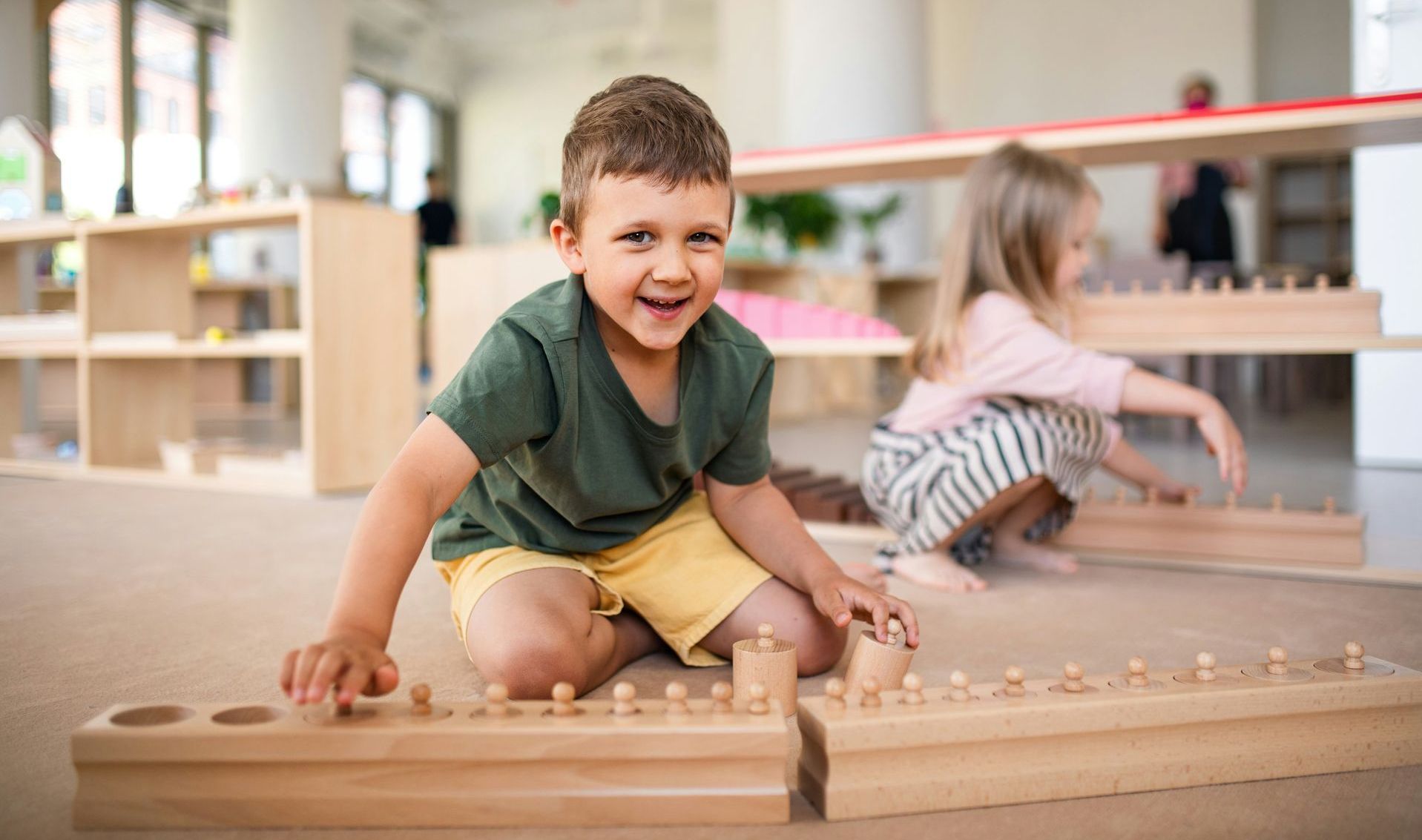
We’d love to see how you’re introducing Montessori at home!
Tag us @jackieandvancie on Instagram with your little one’s Montessori moments!
